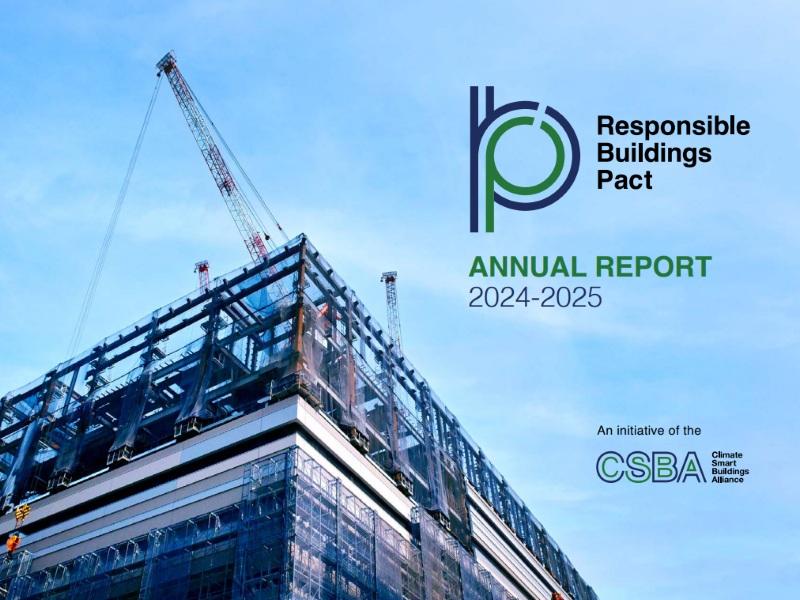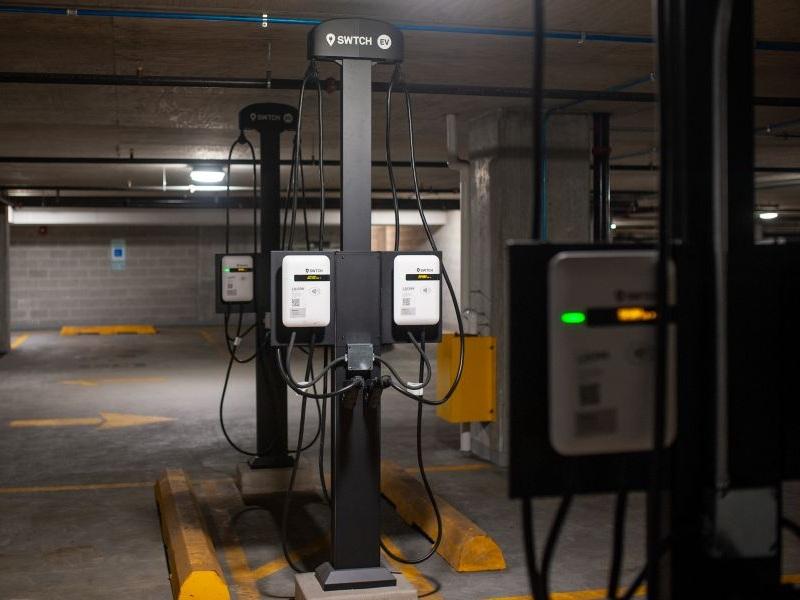
The switch to low-carbon concrete can take place today with minuscule upcharge, according to the first-year results of a pilot run by Climate Smart Buildings Alliance (CSBA).
On a July 31 webinar hosted by the Canada Green Building Council, the findings from the CSBA’s first annual report were discussed by its director David Messer.
The industry organization was created to help change the building sector’s culture and business practices around sustainable materials. It has launched an initiative to explore and share lessons from the use of lower-carbon materials and designs named the Responsible Buildings Pact.
In its first year of focusing on concrete, 109 projects from 25 contractors, developers and consultants were reported. A key insight was “almost everybody was able to find find ways to use low-carbon concrete,” Messer said.
Another critical discovery is that, of the 17 companies which reported costs, six said there was no increase in cost associated adopting concrete that is below the regional baseline for carbon. Another six noted a five per cent increase; while the remaining five participants reported cost increases between 10 and 35 per cent.
As the pilot moves to covering bulk steel, Messer said the CSBA will look to further the pact beyond a target of five projects per company to covering all of a participant's endeavours.
Making the change 'where it makes sense'
Buildings are responsible for approximately 40 per cent of the world’s greenhouse gas emissions, and a significant portion originates from the manufacture of carbon-intensive materials like cement and steel.
Recognizing the reality that low-carbon design and materials are still not mainstream, CSBA advocates for adoption and scaling “where they make sense,” Messer said. The pact is voluntary and non-binding, and designed to be a minimal burden.
The first year of the pact was a proving ground to test the concept and reporting process. Each participant committed to incorporating low-carbon concrete or design considerations in five projects, though it ranged from a company handling one project, all the way up to 12.
Examples include:
- Mantle and Ha/f Climate Design collaborating on an Embodied Carbon Management Toolkit for the Greater Toronto Area that recommends procuring concrete with embodied carbon at least 10 per cent below baseline;
- the Cowichan District Hospital Replacement Project in Duncan, B.C., which is on track to reach a 38 per cent reduction in embodied carbon emissions; and
- Mattamy Homes’ Alberta division testing ECOPact, Lafarge’s low-carbon concrete, which has been used to construct over 2,000 homes and cut embodied carbon by almost 4,000 tonnes of carbon dioxide equivalent compared to conventional concrete.
Minor to no cost premium for most projects
Summarizing the projects, CSBA found:
- 40 per cent had 11 to 31 per cent of the concrete replaced with low-carbon options;
- 33 per cent had 60 to 90 per cent of the concrete swapped for greener alternatives; and
- 27 per cent had 91 per cent or more of the concrete substituted with a low-carbon version.
Approximately 60,800 tonnes of greenhouse gas emissions were offset by the pilots.
For over 70 per cent of the participants, there was either no cost premium for using low-carbon concrete or only a five per cent increase.
Though most companies said the cost increase was non-existent or small, it was the most common obstacle. Weather was a notable problem to contractors and consultants. Contractors identified performance as an issue, consultants cited scheduling, and developers said “other factors.”
“These are the challenges we need new innovations to address, and we need scale, frankly,” Messer said about how to surpass such limitations.
From concrete to steel
Now moving to the second year of the pilot, CSBA will be broadening to bulk steel — rebar, rebar cage, decking, siding, cladding; optionally beams — that is below the regional carbon baseline. Concrete will remain eligible.
Five projects per company will remain the standard, Messer said, but CSBA’s goal is to grow the pact to the point “where everybody is doing this for every project.”
The pact also plans to incorporate common quality assurance principles for low-carbon material and design consideration, so every signatory to the pact is moving along the same path.
The ideal approach is not dictating to organizations, Messer said, but to nudge them to do what makes the most sense for the business and “create that framework so everyone’s doing something roughly similar.”
Another aim for the second year is to fold in municipalities and institutions such as universities and colleges.
As CSBA grows and expands, Messer said he hopes it will connect interested buyers of low-carbon concrete with the supply chain, so low-carbon materials are the default where it makes sense. After the pilots, he aspires to see the association solidify a permanent agreement and governance structure, and have every pact member apply the CSBA’s principles to every project.










